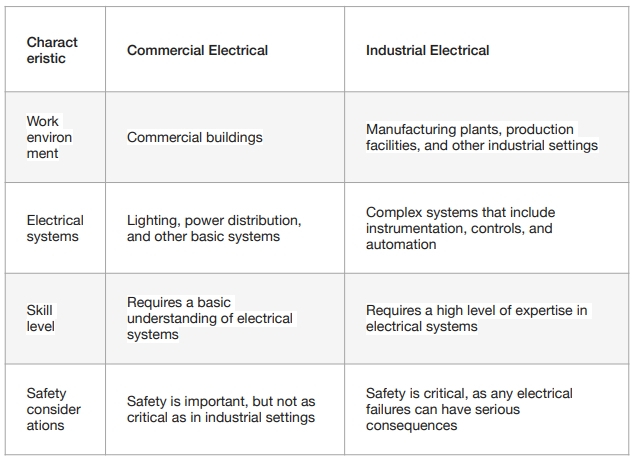Lighting FAQ
There are several reasons why LED lights might flicker. Here are some of the most common causes:
- Incompatible dimmer switch: If you have a dimmer switch that is not compatible with LED lights, it can cause the lights to flicker. This is because dimmer switches work by interrupting the flow of electricity to the light bulb, and LED lights are more sensitive to this than other types of light bulbs.
- Loose wiring: Loose wiring can also cause LED lights to flicker. This is because the light bulb will not be getting a consistent supply of electricity, which can cause it to flicker.
- Faulty LED diodes: If the LED bulb itself is faulty, it can also cause the light to flicker. This is usually caused by a problem with the driver, which is the electronic component that controls the light bulb.
- Voltage fluctuations: Voltage fluctuations in the power supply can also cause LED lights to flicker. This is because LED lights are sensitive to changes in voltage.
- Other factors: Other factors that can cause LED lights to flicker include:
- Dirty or dusty light fixtures: If the light fixture is dirty or dusty, it can cause the LED diodes to overheat, which can lead to flickering.
- Low-quality LED bulbs: Low-quality LED bulbs are more likely to flicker than high-quality bulbs.
- Dirty or dusty light fixtures: If the light fixture is dirty or dusty, it can cause the LED diodes to overheat, which can lead to flickering.
If you are experiencing flickering LED lights, it is important to first identify the cause of the problem. Once you have identified the cause, you can take steps to fix it. For example, if the problem is caused by an incompatible dimmer switch, you can replace the dimmer switch with one that is compatible with LED lights.
Here are some tips to help you troubleshoot flickering LED lights:
- Check the dimmer switch: If you have a dimmer switch, check to see if it is compatible with LED lights. You can usually find this information on the dimmer switch itself or in the product documentation. Check if you have line voltage (Triac) or low voltage (usually has additional purple and grey wires) dimming to your fixture.
- Replace the LED bulb: If you have tried the above steps and the light is still flickering, you may need to replace the LED bulb.
- Contact a qualified electrician: If you are still unable to fix the flickering light, you may need to contact a qualified electrician. Texas Electrical is here to help.
The most efficient commercial lighting is LED lighting. LEDs use up to 90% less energy than traditional incandescent bulbs and last up to 25 times longer. They also produce a more natural light that is better for people's health and productivity.
Here are some of the benefits of using LED lighting in commercial buildings:
- Energy savings: LEDs use up to 90% less energy than traditional incandescent bulbs, which can lead to significant savings on your electricity bill.
- Longer lifespan: LEDs last up to 25 times longer than traditional incandescent bulbs, which means you'll spend less money on replacements.
- Better light quality: LEDs produce more natural light that is better for people's health and productivity.
- Durability: LEDs are very durable and can withstand harsh environments.
- Ease of use: LEDs are easy to install and use.
If you're looking for the most efficient commercial lighting, LED is the clear choice. They offer significant energy savings, a longer lifespan, and better light quality.
Here are some specific examples of LED commercial lighting fixtures:
- Recessed LED downlights: These fixtures are a popular choice for general lighting in commercial spaces. They provide a wide, even light that is ideal for offices, retail stores, and other areas where a bright, uniform light is desired.
- LED track lights: These fixtures are a versatile option that can be used for a variety of purposes, such as accent lighting, task lighting, and display lighting. They are typically mounted on tracks that can be moved around to
adjust the light's direction. - LED linear lights: These fixtures are a good choice for long, narrow spaces, such as hallways and corridors. They provide a bright, uniform light that helps to create a sense of openness.
When choosing LED commercial lighting fixtures, it is important to consider the following factors:
- The type of space: The type of space will determine the type of fixture that is best suited for the application. For example, recessed LED downlights are a good choice for general lighting in offices, while LED track lights are a good choice for accent lighting in retail stores.
- The desired light output: The desired light output will determine the wattage of the fixture. For example, a space that needs a lot of light will require a higher wattage fixture than a space that needs less light.
- The color temperature: The color temperature of the light will determine the way that the space feels. For example, a space that needs a bright, stimulating light would be well-suited for a cool-white LED fixture, while a space that needs a warm, relaxing light would be well-suited for a warm-white LED fixture.
If you are considering upgrading to LED commercial lighting, there are a few things you can do to get started:
- Contact a lighting professional: A lighting professional can help you assess your needs and choose the right LED fixtures for your space. Texas Electrical is happy to help.
- Take advantage of government incentives: Many governments offer incentives to businesses that upgrade to energy-efficient lighting.
- Do your research: There are a wide variety of LED commercial lighting fixtures available on the market. You can find some great deals on fixtures, but check on the seller and the manufacturer. It’s hard to make a warranty claim with a business that’s no longer in business.
Upgrading to LED commercial lighting is a great way to save energy, reduce your carbon footprint, and improve the quality of light in your space. With so many benefits, it is no wonder that LED lighting is quickly becoming the standard for commercial lighting.
Electrical FAQ's
The main difference between commercial and industrial electrical is the type of work environment. Commercial electricians typically work in commercial buildings, like retail stores and restaurants, ensuring that the wiring and electrical components are operating safely and efficiently. Industrial electricians, on the other hand, normally work in manufacturing plants and production facilities with complex, sensitive, and expensive machinery and electrical systems. Industrial electricians maintain a more extensive range of electrical systems, from micro-currents to high-voltage components.
Here is a table that summarizes the key differences between commercial and industrial electrical:

Here are some additional points of difference between commercial and industrial electrical:
- Training: Commercial electricians typically receive on-the-job training, while industrial electricians often complete a formal apprenticeship program.
- Licenses: Commercial electricians may need to be licensed in their state, while industrial electricians may need to be certified by a professional organization.
- Salary: Commercial electricians typically earn less than industrial electricians.
If you are interested in a career in electrical work, it is important to consider the type of work environment that you prefer. If you are looking for a job that involves working with a variety of electrical systems in a safe and secure environment, then industrial electrical may be a good fit for you. If you are looking for a job that involves working with basic electrical systems in a less demanding environment, then commercial electrical may be a good fit for you.
A commercial electrician is a trained and licensed electrician who specializes in the installation, maintenance, and repair of electrical systems in commercial buildings. This includes everything from small businesses to large office buildings, schools, hospitals, and other public spaces.
Commercial electricians typically work with larger and more complex electrical systems than residential electricians. They may also need to work with specialized equipment and materials, such as generators, transformers, and high-voltage cables
In addition to their technical skills, commercial electricians also need to have strong communication and problem-solving skills. They often need to work with architects, engineers, and other contractors to ensure that electrical systems are installed and maintained correctly.
Here are some of the key differences between commercial electricians and residential electricians:
- Work environment: Commercial electricians typically work in larger and more complex buildings than residential electricians. They may also need to work in areas that are not accessible to the public, such as attics, crawlspaces, and basements.
- Skills: Commercial electricians need to have a wider range of skills than residential electricians. They may need to be familiar with different types of electrical systems (such as Delta systems), as well as specialized equipment and materials.
Job duties: Commercial electricians may perform a wider range of job duties than residential electricians. They may be responsible for installing new electrical systems, repairing existing systems, and performing maintenance on electrical and high-voltage equipment.



